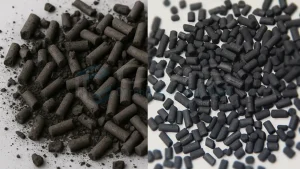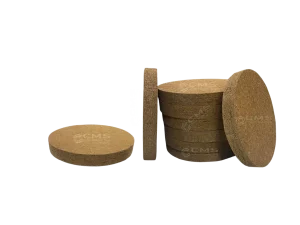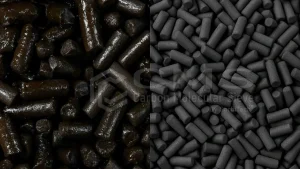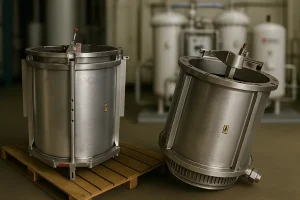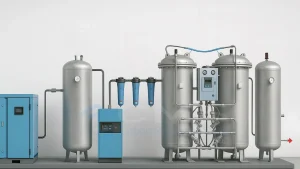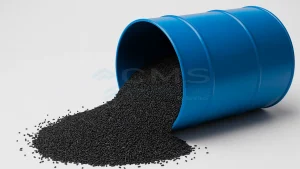What is Carbon Molecular Sieve?
What is Carbon Molecular Sieve (CMS)?
Carbon Molecular Sieve (CMS) is a specialized porous material made of carbon that can separate gases based on molecular size and shape, with uniform pores about 0.3 - 0.5 nanometers wide, In the most common application Pressure Swing Adsorption (PSA) Nitrogen Generation to produce high purity nitrogen. That trap smaller oxygen while letting larger nitrogen molecules flow through. There are some specialized grades, such as CMS 260L, CMS 350KT, CMS 420KT, and CMS 450HP, engineered to meet the specific needs in terms of different flow rates, purity targets, and operating conditions.
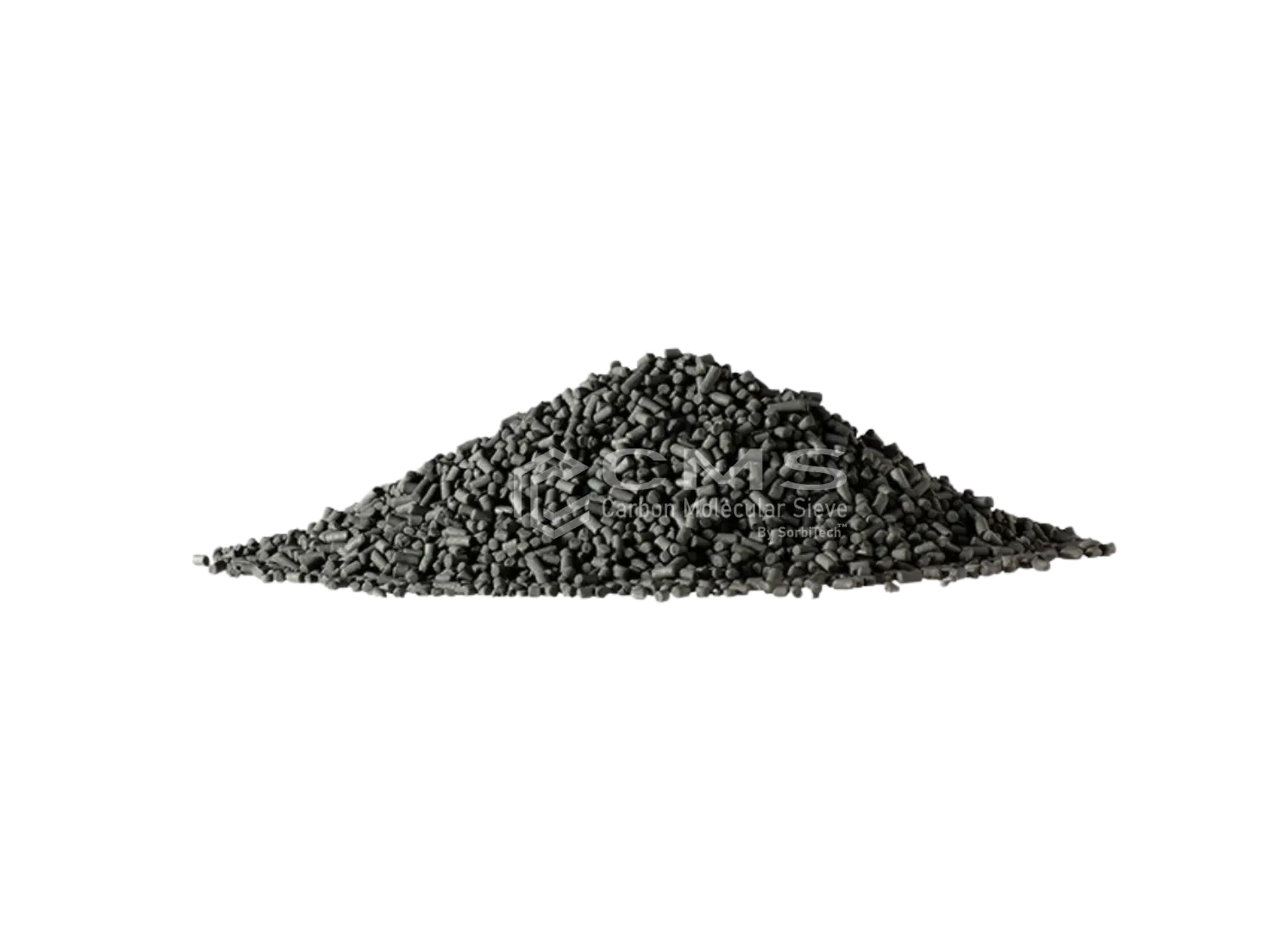
How Does CMS Work in Nitrogen Generator?
- Adsorption: Compressed air enters a CMS packed vessel in nitrogen generator.
- Molecular sieving: Tiny pores (~0.3–0.5 nm) in the carbon selectively capture oxygen, and other small impurities.
- Nitrogen output: Clean, high-purity nitrogen exits the vessel.
- Regeneration: The system depressurizes the CMS bed to release captured gases and prepare it for the next cycle.
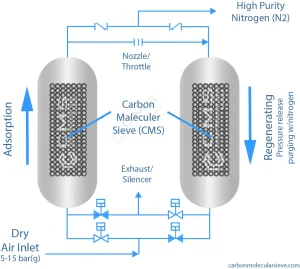
Carbon Molecular Sieve (CMS) Use Cases
Carbon Molecular Sieve is the go to material for on-site gas separation especially nitrogen generation. Its tiny, uniform pores perfectly trap smaller molecules like oxygen, carbon dioxide, and other particles while allowing larger nitrogen molecules to flow through. This molecular “sieving” action delivers ultra-high purity nitrogen (up to 99.999 %) with minimal energy input and a compact system footprint. On-site nitrogen generators use CMS for metal heat treatment, food packaging, laser cutting, tire inflation, and more. And in air separation units for specialty gases in semiconductor and pharmaceutical industries.
Key Features of Carbon Molecular Sieves
- Precise Pores: Uniform 0.3–0.5 nm pores selectively trap O₂, H₂O, and CO₂ while passing N₂.
- High Surface Area: 500–1,200 m²/g of internal area for maximum adsorption capacity.
- Fast Cycling: Adsorption/desorption in 30–120 seconds for continuous, on-demand gas.
- Stable & Durable: Withstands typical industrial temperatures and minor impurities for 5–7 years.
- Low Pressure Drop: Optimized pellet size minimizes airflow resistance and energy use.
- Strong & Robust: Crush strength ≥ 100 N/pellet keeps beds intact under pressure.
Production Process of CMS for PSA Nitrogen Generators
- Choose the precursor
Made from carbon rich materials such as coal, coconut shell, or thermoset polymers (e.g., phenolic resin, polyimide, PAN). The raw material selected determines the final pore structure and mechanical strength. - Shape the material
The precursor mix with a binder (often coal-tar pitch) and then form them into pellets, beads, or monoliths by extrusion or granulation. - Stabilize / pre-oxidize
Polymers stabilize at ~150–320 °C in air to prevent melting and lock in the microstructure.
Coal based precursors may undergo mild oxidation to improve process stability. - Carbonize in inert gas
The shaped material is heated under an inert atmosphere to ~500–900 °C, and as a result, the process removes volatiles and creates a porous structure. - Activate
The carbon partially “burned off” at 700-1000 °C using steam or CO₂. This step creates micropores and increases surface area. - Pore mouth narrowing
A hydrocarbon gas (e.g., benzene, toluene, propylene) is decomposed at ~650-800 °C, depositing a thin carbon layer at the pore entrances. This shrinks pore openings to ~0.3-0.5 nm, giving CMS its unique O₂/N₂ separation ability. - Quality control
Each batch is tested for surface area, density, crush strength, pore distribution, and moisture content.
